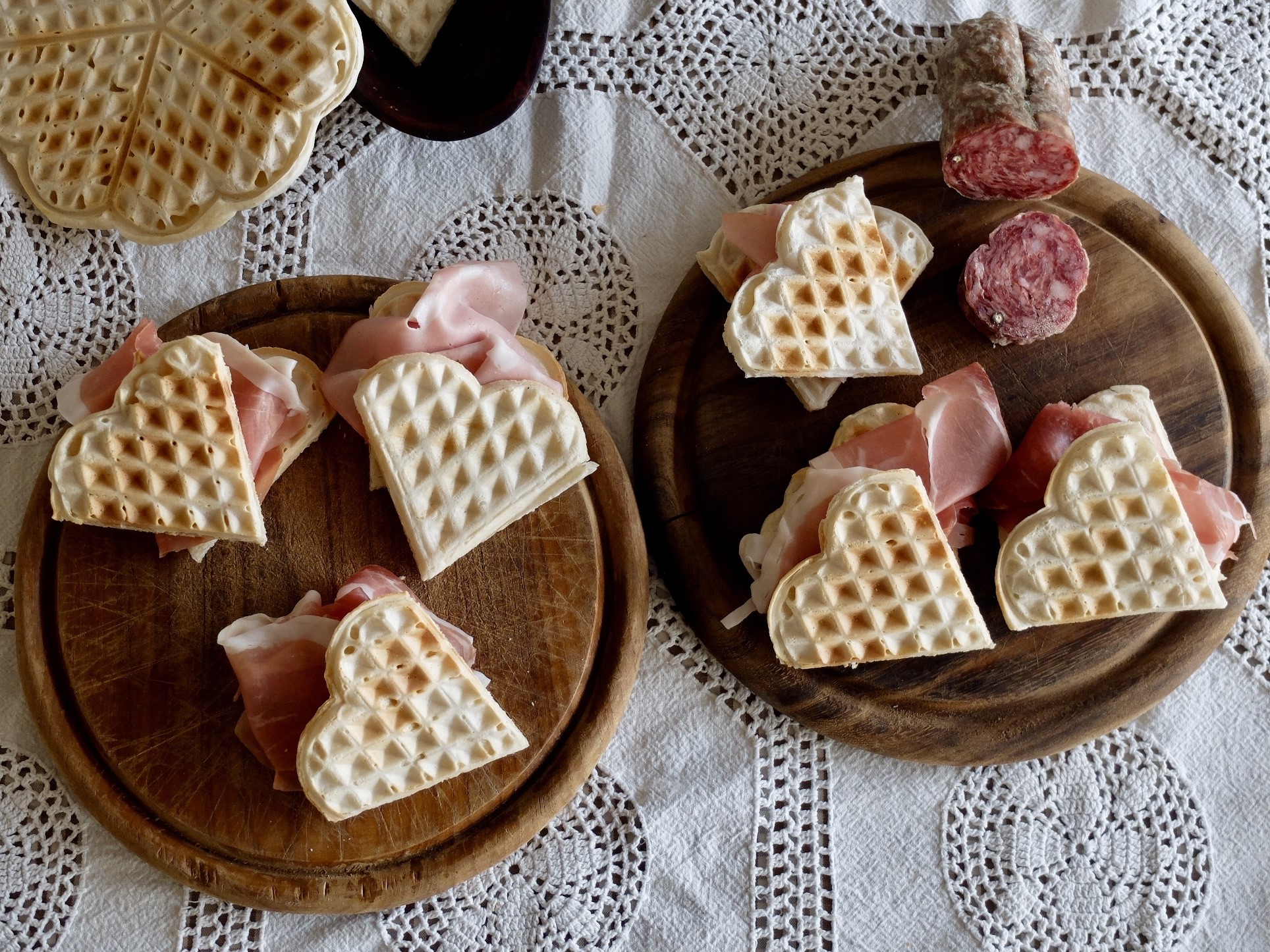
 Umberto Mucci
Umberto Mucci
Italian street food: Gofri and Miasse, Piedmont’s traditional waffles
- WTI Magazine #189 Jul 12, 2025
-

 Umberto Mucci
Umberto Mucci
In the valleys and mountains of Piedmont, long before street food became a trend, locals were already preparing their own rustic, portable snacks. These came in the form of crispy, thin waffles made from simple ingredients like cornmeal, buckwheat, or wheat flour, depending on the area.
Known by different names - miasse in Biella and Canavese, miacce in Valsesia, and gofri in the Val Chisone - these versatile waffles were once a substitute for bread and could be filled with both savory and sweet ingredients.
Gofri, in particular, are enjoying a revival in modern-day Piedmont. These are thin, round waffles with a honeycomb pattern, typically made with flour, water, yeast, and sometimes milk and eggs. Unlike Belgian waffles, their European cousins, gofri are lighter and crunchier, cooked in cast-iron plates that resemble traditional gaufre molds. Their origins date back to at least the 1700s, when waffle irons were first introduced from across the Alps.
In the past, gofri served as a practical alternative to bread during harsh winters, when snow made it difficult to access bakeries. They were made on special irons and cooked directly over the fire. Today, they’ve evolved into a much-loved street food in cities like Turin, where they’re served warm and filled on the spot with high-quality cured meats, local cheeses (such as the famed tome from Piedmont), or fresh vegetables. Sweet versions, with fillings like chocolate hazelnut cream or whipped cream, are equally popular.
The resurgence of gofri and other traditional Piedmontese waffles is part of a broader trend that celebrates local food heritage. While food trucks and fast food chains dominate the American-style street food scene, Italy is looking inward—rediscovering culinary gems from its own past. Local businesses in and around Turin are using organic, locally sourced ingredients and traditional techniques, such as stone-ground flour milled on-site just before baking. This ensures the waffles are fresh, digestible, and nutritionally rich.
Miasse, similar in concept but different in composition, come from the Canavese area and are made with cornmeal instead of wheat. Historically, they were a staple among farming communities and served either as a bread substitute or a complete meal. Like gofri, they are thin and crispy, and today they are often stuffed with sweet or savory fillings. One popular option is miasse filled with hazelnut cream and topped with a dollop of whipped cream—a nod to Piedmont’s rich dessert culture.
The tradition of making gofri and miasse has been passed down through generations, often by oral tradition. Elders recall how, on festive days, women would rise early, prepare the batter, light the fire, and heat the irons to begin making the beloved waffles—turning the kitchen into a celebration in itself.
There’s even literary mention of miasse dating back to the early 1500s. In La Guerra di Andorno, a chronicle of Biella written in Latin by Giacomo Orsi, miasse are noted as a common food item. Today, the tradition continues, supported by the use of ancient Piedmontese corn varieties, known for their flavor and aroma. These are still ground the old-fashioned way—with natural stone mills at slow speeds—preserving the whole grain and fiber.
Whether you try a savory gofri filled with cheese and cured meat, or a sweet miasse with chocolate cream, these traditional treats offer a taste of Piedmont’s past—and a delicious alternative to imported street food trends.